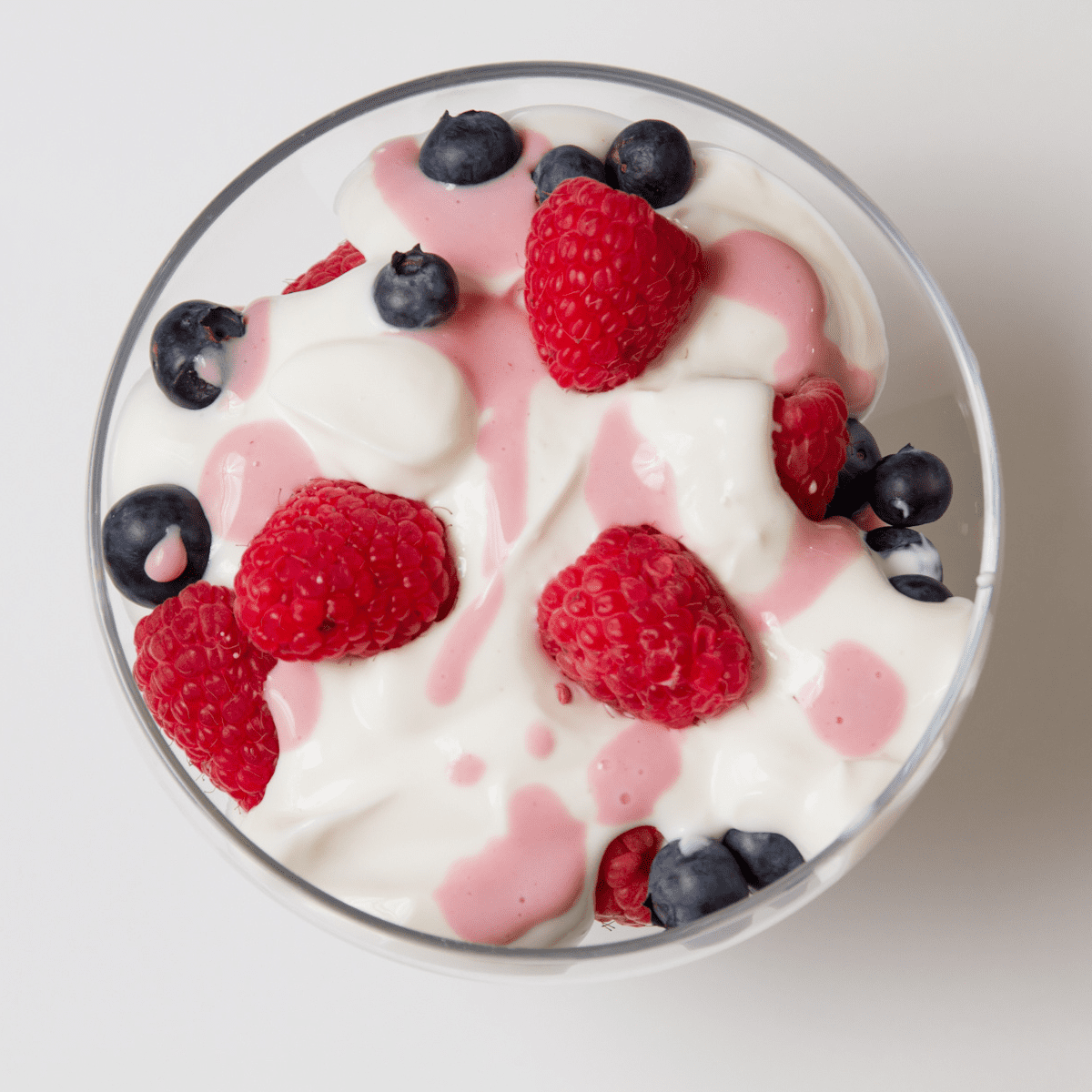How To Stop Your Toddler From Grazing
Dec 21, 2022, Updated Jun 08, 2025
This post contains affiliate links. Please see our disclosure policy.
Does any of this sound familiar to you?
- Your child refuses to eat at mealtime…but asks for a snack right after.
- They’re asking for crackers, chips, cookies, or granola bars all day, every day.
- They very clearly prefer snacks over the meals you cook. And aren’t afraid to tell you!
And because you feel like feeding them is your #1 parental job, you give in. So you let them have their favorite snacks. And that makes sense! Because…
- You don’t want them to be upset.
- You don’t want them to go hungry.
- You’re trying to get things done and need 5 minutes without whining!
- You’re worried they’re not eating enough.
This all-day, toddler snacking cycle is SO common, and it’s not your fault. But that doesn’t mean you have to live with it, either! A few little changes in your days can make all the difference.
In this post, I’ll dive into the why behind endless toddler snacking, give you strategies to combat the constant grazing, and help you get your kids to sit down at meal times ready to eat.
Table of Contents
- It’s Normal & Okay That Your Toddler Loves Snacks
- The Problem With All-Day Snacking
- Snacking Limits Mealtime Hunger
- Filling Up On Snacks Can Limit Nutrient Intake
- Most Snacks Are Missing Macronutrients
- How To Stop Your Toddler From Grazing: 3 Simple Strategies
- #1 Create A Meal & Snack Schedule
- #2 Prioritize Well-Rounded Snacks
- #3 Sit Down for Meals & Snacks
- #4 Serve Balanced Meals
- #5 Say No Sometimes
- Toddler Snacking FAQs
- Should I Give My Toddler A Bedtime Snack?
- Should We Have A Snack Drawer?
- What If My Toddler Is Sad or Bored?
- Grab My Free Store-Bought Snack Guide
It’s Normal & Okay That Your Toddler Loves Snacks

First of all, I want you to know that it makes sense that your toddler is so interested in snacks. It’s not because of anything you did or didn’t do. It’s not “bad” and they’re not “obsessed” either. Snack foods (think Goldfish, chocolate chip cookies, Cheez-Its, and Doritos) just have way more appeal to kids than meals!
If your child is picky, it’s also likely that snacks feel safer to them. Think about it: every Goldfish cracker tastes exactly the same. But blueberries? Some are sweet, some are sour, some are crunchy, and some might be a little too ripe and mushy. That’s a lot of risk for them to take!
Bottom line: It’s okay that your toddler loves snacks!
Snacks Have Their Place In The Day
I don’t want to villainize snacking or say snacks aren’t part of a healthy diet because they absolutely are! When they’re relatively balanced, like the ones included in my free toddler snack guide, snacks are an important and even necessary part of your child’s day. They’ll help make sure your kids are satisfied between meal times and getting all the energy they need. (This means you’ll hear less, “Moooooom!! I’m huuuungrrryyy!!!”)
But even though snacks should be part of your toddler’s day, that doesn’t mean they have to take up a huge part of yours! If the planning, buying, cutting, washing, prepping, and cleaning up has you feeling like all you ever do is feed them snacks, download my healthy packaged snack guide and take some pressure off.
The Problem With All-Day Snacking

I’m all for a good toddler snack, but too many in a day isn’t ideal. And there are a few reasons why:
Snacking Limits Mealtime Hunger
Snacking becomes an issue when your toddler grazes so much that they aren’t hungry at mealtimes or interested in meals. This can contribute to picky eating at mealtimes, too.
Filling Up On Snacks Can Limit Nutrient Intake
Snacks can take up so much space in your toddler’s days (and their stomachs) that they displace the nutrients your little one should be getting from the nutritious meals you’re making.
Most Snacks Are Missing Macronutrients
Often, kids’ snacks are things like crackers, cookies, and chips. These foods aren’t awful and can fit into a balanced diet. But I like to call them “crunchy air” because they give kids a carbohydrate boost…and not much else.
Carbohydrates aren’t bad at all. And toddlers need a good amount of them each day. But their bodies use carbs for quick energy, which means that depending on the type of carb, they can burn through them really fast and then feel hungry again. So without adding some protein, fat, or fiber to the mix, your toddler will likely be asking you for another snack within minutes of finishing their last one. And this only perpetuates all-day grazing and random snack requests!
How To Stop Your Toddler From Grazing: 3 Simple Strategies

By now, you know snacks aren’t evil and they have their place in your toddler’s diet. Especially if they’re balanced. But does that mean you have to be okay with your toddler harassing you for a snack every 5 minutes until you pull whatever’s left of your postpartum hair out?! Definitely not! I know that struggle and I’d never leave you to deal with it alone. 😅
If snack consumption is all-consuming right now, these tips will help you break the cycle and get your toddler eating proper meals—at least most of the time!
#1 Create A Meal & Snack Schedule
The first step to cutting down on all-day grazing and snacking is to establish semi-regular meals and snack times. This doesn’t have to be a picture-perfect feeding schedule. Think of it more like a loose routine.
A routine like this tells your toddler what to expect. They learn that “these are the times when we eat” which, perhaps to their surprise, are not just whenever they feel like it. 😝
I know it can be a challenge to go from no routine to some semblance of one, but toddlers thrive on routine so it is worth it. Your schedule may not look the same every day, but if you can find a framework that works most of the time, you’re sure to see some improvement.
Three meals and two snacks in a day is a really good rule of thumb. Do what works for you, but this is what it looks like in our house, most days:
- 7:30 am Breakfast
- 10 am Snack
- 12 pm Lunch
- 3 pm Snack
- 6 pm Dinner
I find that a mid-morning and a mid-afternoon snack usually is enough to get my kids to mealtime with the appropriate hunger levels!
#2 Prioritize Well-Rounded Snacks
Be strategic about the snacks you keep on hand. You don’t need to be super rigid. They totally can have their favorite snacks and still have a healthy diet overall! But adding a little bit of structure around snack time—both in regards to timing and type of snack—can help them regulate their appetites a little bit better.
To avoid sugar crashes and keep your toddler fuller for longer, aim to give them satisfying, nutritious snacks by combining all 3 macronutrients (carbs, protein, and fat) in their snacks whenever possible. So if they love pretzels, serve pretzels with a glass of whole milk. The pretzels are a carb and the milk will balance out the snack by adding fat and protein. Or, if they love fruit, serve their favorite fruit but with a Babybel cheese wheel on the side. The goal is to provide them with things that will keep them full and tide them over until their main meals—but not replace meals themselves.
#3 Sit Down for Meals & Snacks
As much as possible, offer meals and snacks sitting down. Having kids sit at the kitchen table or in designated spots signals to them that it’s time to eat. I know this can be tough for snacks since they often need to be eaten on-the-go or between activities, and that’s okay. But whenever you can, try to prioritize serving a snack in the same way you would a meal.
Promoting good meal- and snacktime behavior can limit distractions and reduce mindless eating while encouraging mindful eating. Eating mindfully helps toddlers tune into their hunger and fullness cues. It’s a good skill set for your child to practice because it’ll serve them well for their whole life!
#4 Serve Balanced Meals
There’s a lot you can do at mealtimes to prevent future grazing, like serving meals balanced with all 3 macronutrients. But I know this is a lot easier said than done! Especially if your child is a picky eater.
If you can, try to find ways to get in some of the things they may be missing. If you know they don’t eat much protein, choose a protein-rich noodle, like chickpea pasta, instead of regular. It’s okay to serve meals with a glass of cow’s milk or fortified non-dairy milk, too! This can complement what they’re eating off their plate and help get them what they need while also keeping them fuller for longer.
#5 Say No Sometimes
When you have a set meal and snack routine in place, you know you’re offering plenty of opportunities for your toddler to eat. So when they ask for a snack outside of these times, you can feel OK about saying no.
Even if your child is truly hungry when they’re asking, it’s okay for them to feel hungry for a little while. Hunger is not an emergency. Children need to learn how much food their body needs at one time. They don’t learn to fill up at mealtimes if they know they can eat a snack any time they feel a little bit hungry.
Is this easier said than done? Yes. Will they be thrilled with you? No, probably not. But it’s not bad to say no sometimes. And you’re not a bad parent if you have to say no. Far from it!
How To Say No
If they’re young enough, you can distract them with something else. For older kids, you can tell them that it’s not snack time yet, but that you’ll be eating in an hour or whenever the next time is. You could also suggest an alternate activity, offer a glass of water, or ask if they want to help you prepare the next meal when it’s time.
Helpful scripts:
- It’s not snack time yet. Let’s go pick out a book! Do you want to read about dinosaurs?
- It’s not snack time right now, would you like to _______ (insert activity) instead?
- Are you feeling hungry? Dinner time is coming up, so we’ll have the chance to feed our bodies soon!
Toddler Snacking FAQs

Should I Give My Toddler A Bedtime Snack?
Depending on when dinnertime is, a bedtime snack could be a good idea. Typically, I find that bedtime snacks work best when dinner is early and your child has a later bedtime.
If you do incorporate a bedtime snack, keep it simple. Avoid anything too exciting because we don’t want them to get into the habit of skipping dinner to hold out for their favorite snack later at night. And look for something that will keep them full overnight. So instead of something too high in sugar, go for a full-fat cheese string with fruit or yogurt with nut butter mixed in.
Related: Healthy Bedtime Snacks for Toddlers
Should We Have A Snack Drawer?
A snack drawer is typically stocked with enticing and accessible toddler snacks. It can be appealing for parents because it’s convenient and lets kids serve themselves, but in my experience, it’s not the best idea.
Toddlers aren’t exactly experts at delaying gratification! So if they know they can go grab a snack whenever they want, regardless of when the next mealtime is, they will! And then they likely won’t be hungry by that mealtime.
What If My Toddler Is Sad or Bored?
Try to avoid offering snacks as a consolation prize, as something to do, or for emotional regulation. We want to promote healthy relationships with food which means encouraging your toddler to eat when their body is hungry (within designated meal and snack times) and stop when it’s full, instead of eating as a distraction or reward.

Grab My Free Store-Bought Snack Guide
Snacks are hard. You need so many of them! Every single day!! My packaged snack guide makes grab-and-go toddler snacks easier—and a little more nutritious. It’s easily viewed from your phone, too, so you can quickly pull it up in Target and decide what to get!
The products suggested in this guide contain 7 grams or less of added sugar, no artificial colors, no artificial flavors, and only real food ingredients. Plus, I share photos of my favorite brands and labels so that you don’t have to measure, count, or think about anything extra!













